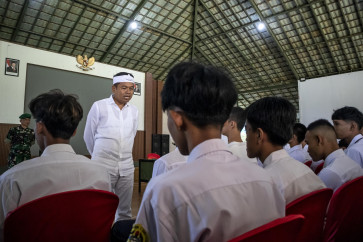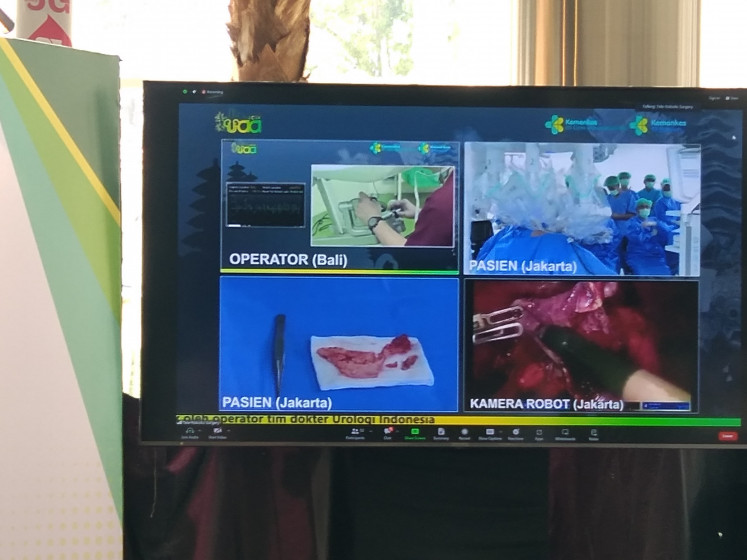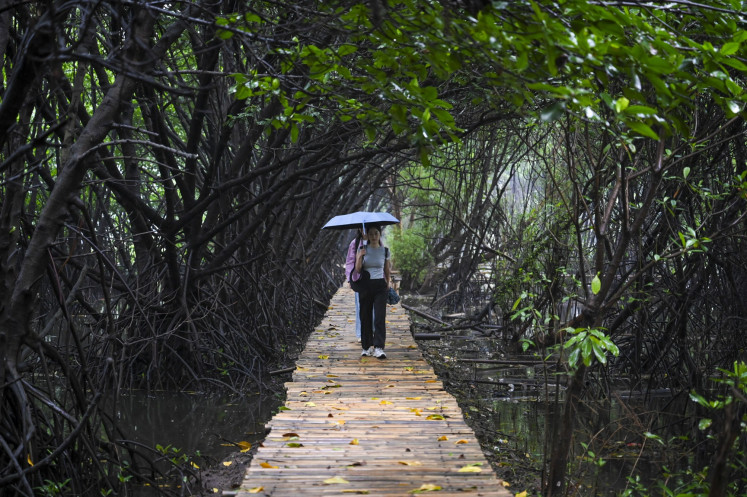Popular Reads
Top Results
Can't find what you're looking for?
View all search resultsPopular Reads
Top Results
Can't find what you're looking for?
View all search resultsSight : The Blanjong Inscription - “A significant historical landmark in Sanur”
Before Sanur became a busy tourist destination with luxury villas, resorts, cafés and restaurants, it was a quiet fishing village with pristine white sand beaches
Change text size
Gift Premium Articles
to Anyone

Before Sanur became a busy tourist destination with luxury villas, resorts, cafés and restaurants, it was a quiet fishing village with pristine white sand beaches.
Despite the rapidly growing tourism-related development, Sanur still has signs of its history, including at Blanjong, which used to be a small coastal hamlet in eastern Sanur.
The name Blanjong is believed to have stemmed from two words — belahan (cracked) and ngenjung (vessel).
Credence is given to this because the hamlet houses the island’s oldest inscription, Prasasti Blanjong, on a 1.77 meter-tall cylindrical stone pillar with a diameter of 62 centimeters.
“The inscription includes the date of its writing, mentioning 913 AD. It also reveals the name of Bali’s king, Sri Kesari Warmadewa. Many believe it is a mark of the king’s victory,” explained 58-year-old Jero Mangku Mawa, the caretaker of the inscription.
The inscription was written in two languages — pre-Nagari, an Indian language used for ancient Balinese, and Kawi, the old Javanese language. According to the inscription, it was written in 835 of the Balinese Caka lunar calendar, which corresponds to 913 AD in the Gregorian calendar.
The use of the two languages marks the beginning of the Javanese and Indian influences on the kingdom of Bali and its people, with early Hinduism and Buddhism, as well as old Javanese and Indian cultures becoming familiar.
The Blanjong Inscription is now safely preserved in a glass enclosure. Because of its historical significance, the inscription is under the guardianship of the Archeology and Antiquities Agency, which covers areas in Bali, West and East Nusa Tenggara.
Every day, both local people and visitors come to the site. The local people view it as a sacred place to pray and give offerings seeking safety and prosperity. Indonesian and international scholars frequently visit to conduct research and study the island’s history.
The government has conducted renovations twice, in 1961 and 1988, to preserve this important archeological find. Numerous old statues and other items have also been found around Prasasti Blanjong.










